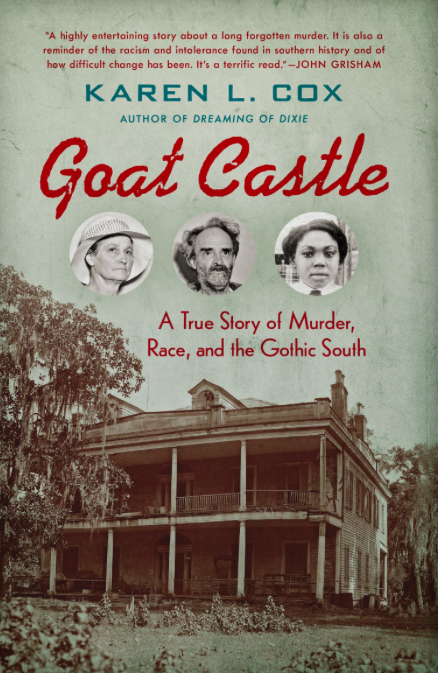This week we had the pleasure of talking to Karen Cox, a professor of History at the University of North Carolina at Charlotte and author of Goat Castle: A True Story of Murder, Race, and the Gothic South. Cox talks about her book and her process for writing about a woman whose story was nearly hidden. In the Jim Crow south of the early 1930’s Natchez, Mississippi, Emily Burns was wrongly imprisoned for a murder she didn’t commit while the true murderers became celebrated southern eccentrics who opened their home to goats, chickens, and-- for a price-- tourists.
Emily Burns
Unlike southern gothic fiction, the murder of Jennie Merrill does not make the story of the infamous Goat Castle exceptional. Rather, it is neighbors Dick Dana and Octavia Dockery that quite literally take the spotlight. After being jailed for Merrill’s murder and quickly released despite fingerprint evidence, newspapers latched on to the odd pair’s story. People flocked to Natchez to get a glimpse of the failed descendants of southern aristocracy who now shared their antebellum home, once called Glenwood, with livestock. Meanwhile, Emily Burns and her mother were in jail for months before Emily was sentenced to life in prison for a murder she didn’t commit. Although Emily was later pardoned and didn’t serve her full sentence, the many years she spent incarcerated define the story of Goat Castle as more than just southern eccentricity, but as southern injustice and real-life horror.
Cox went in search for the story behind the story-- the story behind the dichotomy of the “old south” that Dana and Dockery represented to their visitors. Finding the stories erased not only by an unconcerned and Jim Crow past but by incorrect retellings is imperative for understanding American history, race, and community today. By telling Emily’s story, Cox does important work towards creating space for truth and belated justice that, although decades later, resounds with injustice we see today. Buy Goat Castle here.

